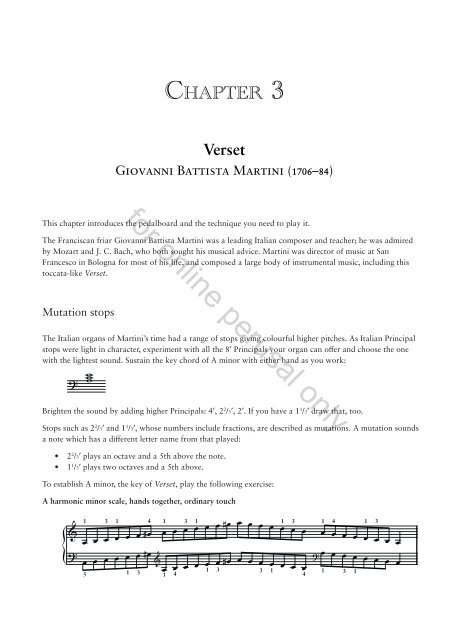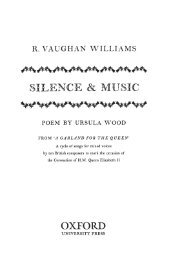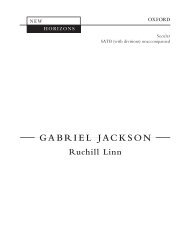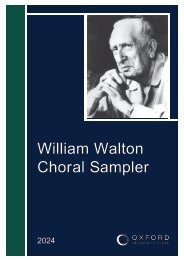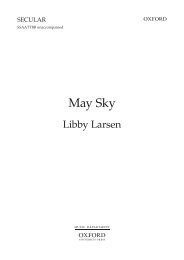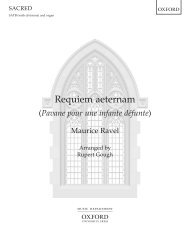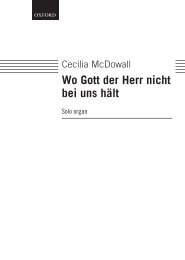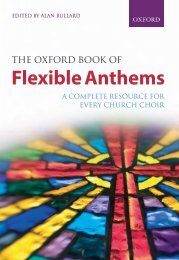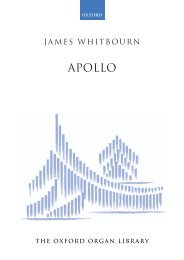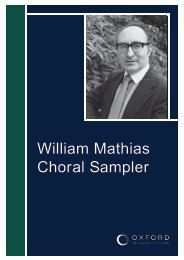New Oxford Organ Method
A single piece of repertoire is the primary focus for each chapter, with preparatory exercises providing the necessary technical work building towards the piece. Each lesson covers four main topics, which are systematically developed: practice methods, registration, fingering and pedalling, and historically-informed interpretation. The method is for keyboard players of any age who are establishing first steps at the organ with or without a teacher. It will also serve more experienced organists who want to improve their technique.
A single piece of repertoire is the primary focus for each chapter, with preparatory exercises providing the necessary technical work building towards the piece. Each lesson covers four main topics, which are systematically developed: practice methods, registration, fingering and pedalling, and historically-informed interpretation. The method is for keyboard players of any age who are establishing first steps at the organ with or without a teacher. It will also serve more experienced organists who want to improve their technique.
- No tags were found...
You also want an ePaper? Increase the reach of your titles
YUMPU automatically turns print PDFs into web optimized ePapers that Google loves.
Chapter 3<br />
Verset<br />
Giovanni Battista Martini (1706–84)<br />
for online perusal only<br />
This chapter introduces the pedalboard and the technique you need to play it.<br />
The Franciscan friar Giovanni Battista Martini was a leading Italian composer and teacher; he was admired<br />
by Mozart and J. C. Bach, who both sought his musical advice. Martini was director of music at San<br />
Francesco in Bologna for most of his life, and composed a large body of instrumental music, including this<br />
toccata-like Verset.<br />
Mutation stops<br />
The Italian organs of Martini’s time had a range of stops giving colourful higher pitches. As Italian Principal<br />
stops were light in character, experiment with all the 8ʹ Principals your organ can offer and choose the one<br />
with the lightest sound. Sustain the key chord of A minor with either hand as you work:<br />
? w<br />
Brighten the sound by adding higher Principals: 4ʹ, 2 2 /3ʹ, 2ʹ. If you have a 1 1 /3ʹ draw that, too.<br />
Stops such as 2 2 /3ʹ and 1 1 /3ʹ, whose numbers include fractions, are described as mutations. A mutation sounds<br />
a note which has a different letter name from that played:<br />
• 2 2 /3ʹ plays an octave and a 5th above the note.<br />
• 1 1 /3ʹ plays two octaves and a 5th above.<br />
To establish A minor, the key of Verset, play the following exercise:<br />
A harmonic minor scale, hands together, ordinary touch<br />
1 3 1 4 1 3 1 1 3 1 4 1 3<br />
{ & œ œ œ œ œ œ # œ œ œ œ œ œ œ # œ œ œ œ œ œ œ œ œ œ œ œ œ œ œ œ<br />
?<br />
?<br />
œ œ œ œ œ œ # œ<br />
œ<br />
&<br />
œ œ œ œ œ œ # œ œ<br />
œ œ<br />
œ œ<br />
œ<br />
œ<br />
œ œ<br />
œ œ<br />
œ œ<br />
œ<br />
5 1 3<br />
1 4<br />
1 3 3 1<br />
4<br />
1 3 1


